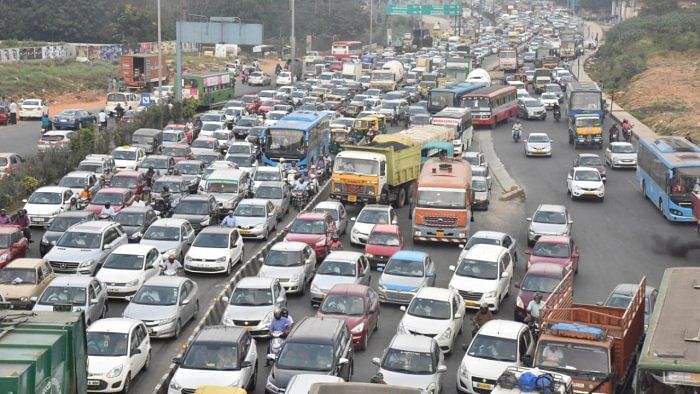
Recently, Prime Minister Narendra Modi laid the foundation stone for the Bengaluru suburban rail project and set an ambitious 40-month target to “decongest Bengaluru”. As traffic woes continue to mount in the Silicon Valley of India, it is a step in the right direction to improve the city’s mobility metrics.
Under the initiative, Chief Minister Basavaraj Bommai directed authorities to decongest 10 major bottlenecks in the city, including the infamous Silk Board junction. In early July, the Bengaluru Traffic Police (BTP) enforced traffic channelisation and diversions to ease the congestion at the Hebbal flyover. A signal synchronisation project, with an estimated cost of Rs 48 crore, for the central business districts and high-density corridors is in the pipeline. These measures are a welcome step towards easing congestion in the city.
Traffic and transportation surveys are essential to gain a clearer perspective on issues such as gridlock at major junctions and lower-than-forecasted metro ridership. In fact, these surveys are important to identify the root causes and develop traffic mitigation measures.
The Comprehensive Mobility Plan for Bengaluru (CMP Bengaluru 2020), the Comprehensive Traffic and Transportation Study (CTTS 2018), and the Comprehensive Traffic and Transportation Plan are some of the important openly-accessible reports that provide a broad understanding of the traffic situation. However, the data sources for CMP 2020 (mainly CTTS 2018, Masterplan 2031 dated 2017, and the RITES metro study dated 2016) might not accurately reflect the current transportation scenario. The scale and dynamic nature of the city’s traffic situation, coupled with pandemic-induced changes in people’s travel behaviours, warrant fresh data collection through transportation surveys.
Household travel surveys are one of the primary sources for detailed information on the commuting patterns of residents. They help gain insights on various aspects such as daily trip rates (that is, the number of intra-city trips made by an individual on a normal working day) and travel mode share as well as their distribution across different zones in a city. These surveys are common around the globe, including India. However, in most European cities, they are conducted regularly to track changes in travel patterns.
Accordingly, scientifically designed, periodic household travel surveys would help develop long-term solutions to decongest Bengaluru.
A recent article questioned the effectiveness of the 10-km-plus metro line from Goraguntepalya to Nagasandra in reducing traffic volumes on Tumakuru road; in this context, an origin–destination (OD) survey would provide clarity on the underlying issue(s).
Commuters choose a travel mode based on cost and convenience, among other factors. A willingness-to-pay survey can capture the fares commuters can afford and accordingly help adjust bus and metro fares. Traffic counts along major roads and turning counts at major intersections can help gauge the performance of the infrastructure in terms of the level of service. Work in this direction has already begun, and reports indicate that the BTP has commenced taking traffic counts on select stretches across the metropolis.
On similar lines, the first step to facilitating active transport would be to make an inventory of the required infrastructure—footpaths, cycle tracks, and parking spaces as per relevant Indian Roads Congress standards. It will be worthwhile to note that “Parking Policy 2.0” (dated December 2020) suggested the utilisation of parking revenue for active transport infrastructure.
Further, it is of utmost importance that the survey data be anonymised, digitised, and collated in an openly accessible database. Notably, CMP Bengaluru 2020 suggested much needed data-sharing standards for urban transport data. Based on these standards, a database should be constructed to collate data held in silos with various public and private entities. Such an open-access database would significantly benefit the ‘Decongest Bengaluru’ initiative by providing impetus to research in the domain, thereby enabling academic institutions, research organisations, and policy think-tanks to develop and suggest viable solutions.
The success of these surveys primarily depends on active public participation, which can be ensured by awareness campaigns and attractive incentives to survey participants. Development of viable solutions to decongest Bengaluru needs wide-ranging expertise and coordination among various agencies, both public and private.
Findings from transportation surveys will act as an input for authorities to develop data-driven long-term measures to “decongest” Bengaluru. Meanwhile, residents can play an impactful role in decongesting Bengaluru by avoiding or reducing commutes by personal vehicles and switching to public transport and active transport options.
(The writer is with the Center for Study of Science, Technology and Policy)